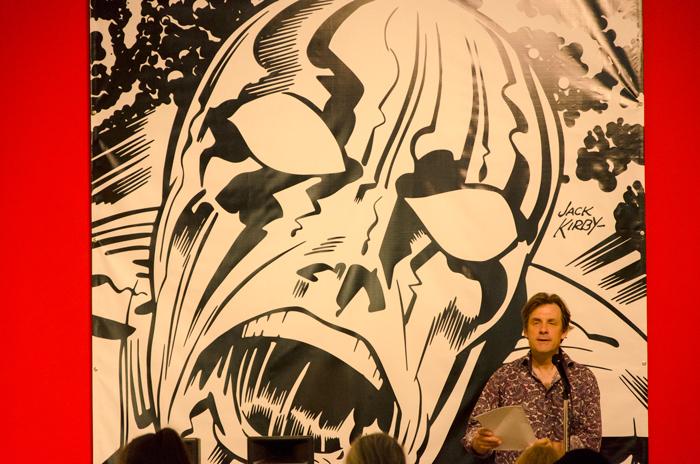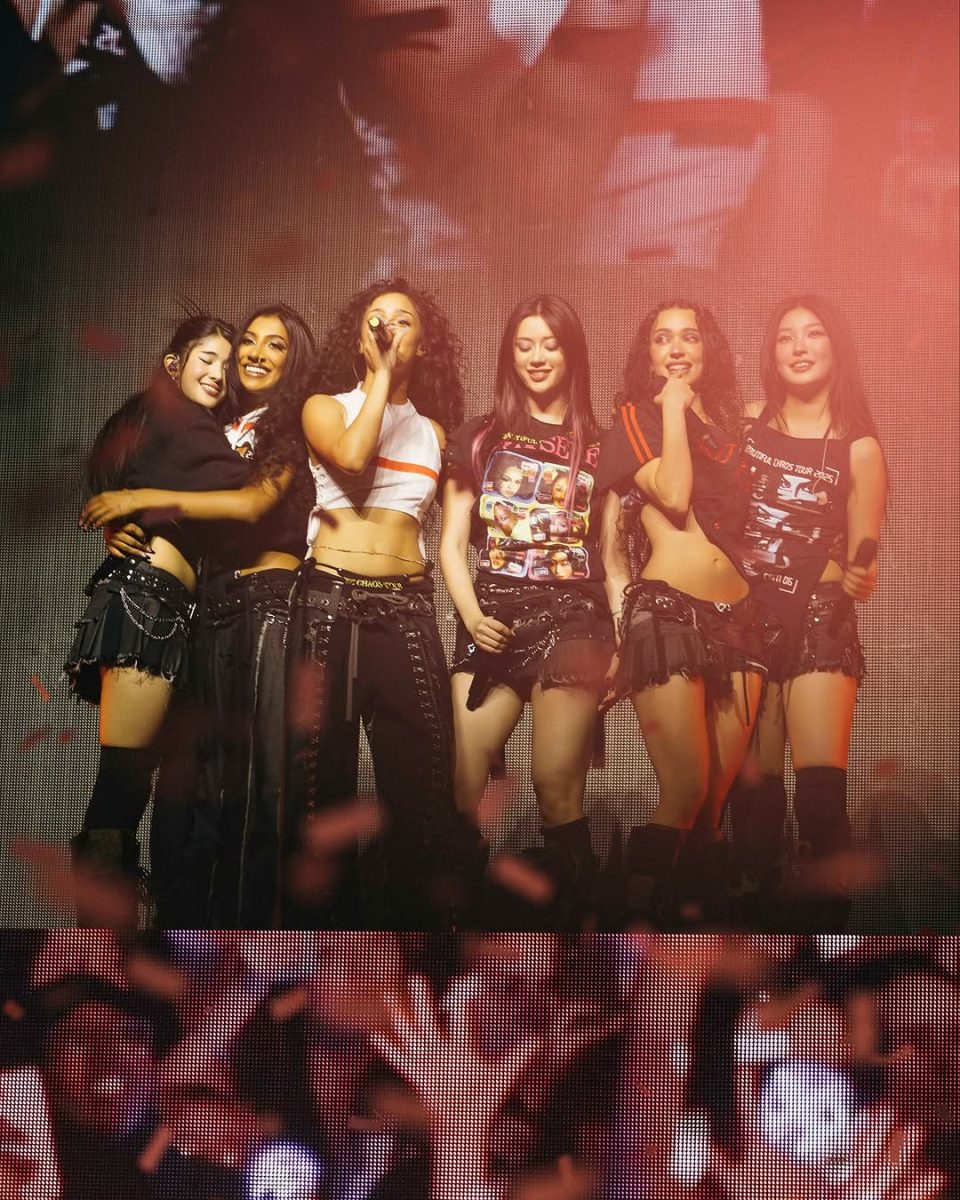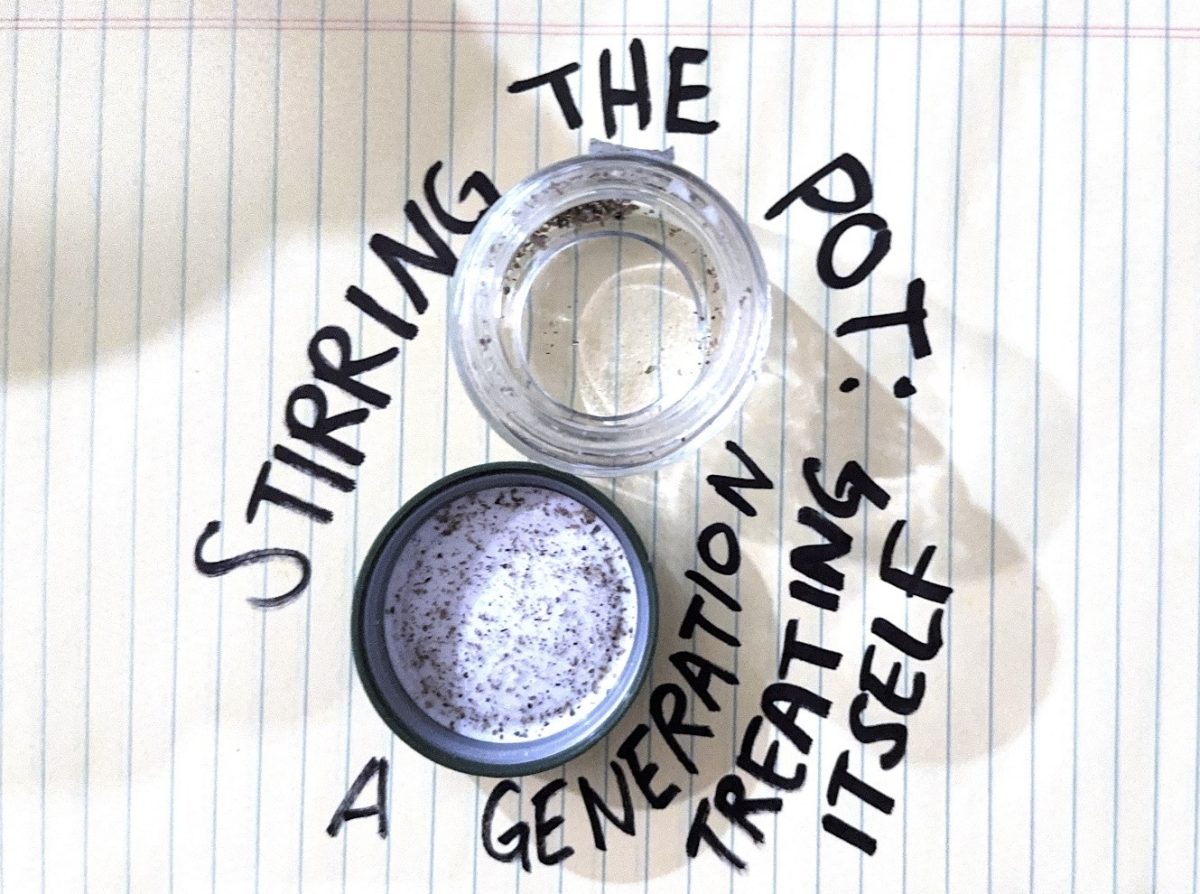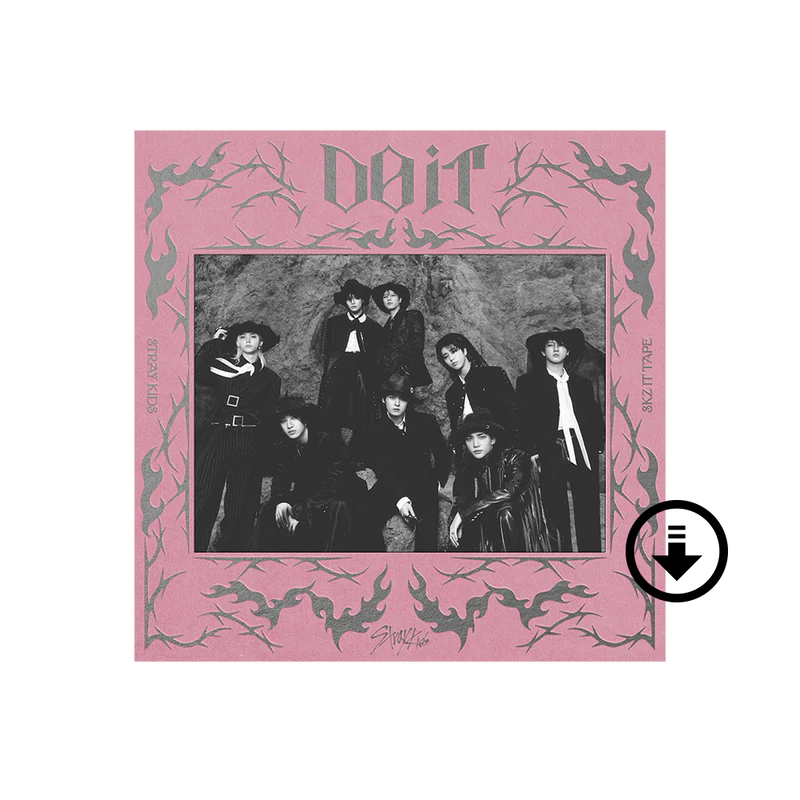If the vital purposes of a retrospective are the honoring of the artist, followed by the appreciation of the art, then those purposes find themselves manifest in “Comic Book Apocalypse: The Graphic World of Jack Kirby.”
The exhibition, curated by California State University, Northridge professor Charles Hatfield, succeeds under these auspices because it does not pretend to be anything other than it is: it is a showcase for comic strips.
Though Jack Kirby was one of the most influential artists of the 20th century, whose influence can still be seen, heard, and consumed today, his medium was still the relatively small [when compared to photographs, paintings, and sculptures, the usual inhabitants of gallery walls] comic page. There are more words than drawings, more dialogue than sketches. It is far from a traditional exhibition.
As such, most of the artwork in the exhibition is no bigger than the size of a piece of paper from a notebook. Another natural aspect of the exhibition, to be expected by anyone who has read the title, is the lack of color in the chosen comic strips.
Seemingly to make up for the absence, some of the surrounding walls have been painted brilliant shades of red and yellow – something, if not resembling than at least appropriating, the same color scheme used in Iron Man.
Still, there is plenty to be admired, even for those who are not fans of Kirby’s work, or admirers of comic books. One of the common elements to be found in this exhibition are the snapshots of scenes taken straight from the middle of a story. This is another natural result of displaying the pages of comics as if they were a single portrait, or landscape, or abstraction.
The stories present are almost always going to be out of context, but, over time, as the exhibition space is meandered through, the story of the true subject (Kirby) comes into focus, and a deliberately crafted timeline reveals itself. If an artist can be known by his or her work, then Kirby can be known not only through his graphic drawings, but also through the accompanying dialogue, despite the lack of context.
In this exhibition size is undoubtedly a factor. The dialogue is required reading to experience the full breadth of this exhibition, and this would, ostensibly, require glass for those hard of seeing. But there are a few images in the gallery which could be seen from yards away, and could only be seen in full from at least 20 feet away.
It likely wouldn’t be false to say that the pieces were conceived of as the centerpieces of the exhibition. One of images presents an imposingly large supervillain named Darkseid, which, it is worth noting, is presented in color. This color and pure scale becomes appropriate and in no way jarring after viewing so many comic strips.
The other large scale image is not in color, but is in many ways the more engaging of the two. The Silver Surfer, a hero created by Kirby, contorts his face in an expression of pure anguish while evidently located in the far reaches of space. Unlike the large scale Darkseid graphic, there are no words that accompany this, so the pain goes seemingly unexplained: the viewer is simply and unapologetically confronted with it.
This image serves as a definition of what comics of this nature are: the intersection of the visual arts and literature, the imagining of people who can take on suffering for the sake of others. These ideas are present in the images Kirby drew, and the media we consume almost every day, and it’s in a gallery.
“Comic Book Apocalypse: The Graphic World of Jack Kirby” will be shown in the main gallery at CSUN through Oct. 10.












